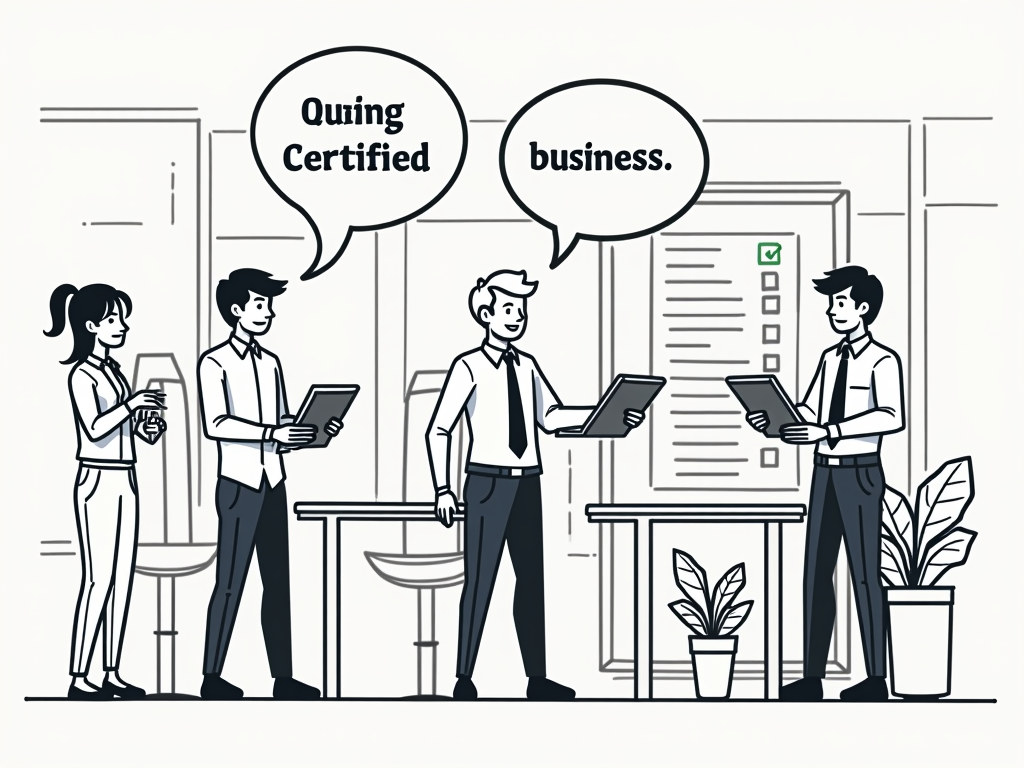
Navigating UAE’s Employment Landscape: A Comprehensive Guide to Legal Human Resources
Reading time: 12 minutes
Table of Contents
Introduction to UAE’s Employment Framework
Navigating human resources in the UAE requires more than just standard HR knowledge—it demands a specialized understanding of the country’s unique legal framework, cultural nuances, and regulatory environment. Whether you’re an HR professional new to the region or a business leader expanding operations into the Emirates, mastering these complexities isn’t just about compliance—it’s about creating competitive advantage.
The UAE’s employment landscape has undergone significant transformation in recent years. With the introduction of labor reforms in 2022, overhaul of the workweek structure, and implementation of end-of-service benefit modifications, staying current isn’t optional—it’s essential for operational success.
Let’s examine a quick scenario: Imagine you’re tasked with building an HR department for a tech company expanding to Dubai. Beyond the standard recruitment and retention challenges, you’ll face unique considerations around Emiratization quotas, cultural diversity management across potentially dozens of nationalities, and navigating the crucial process of securing proper work permits and what is uae residence visa for your international talent.
This guide cuts through the complexity to deliver practical, actionable insights that balance legal requirements with strategic HR excellence in the Emirates.
Legal Requirements for Employers
The foundation of HR compliance in the UAE rests on Federal Decree-Law No. 33 of 2021 (the “Labor Law”), which governs private sector employment relationships. Understanding these regulations isn’t just about avoiding penalties—it’s about creating sustainable business operations.
Employment Contracts
Employment contracts in the UAE aren’t mere formalities—they’re legally binding documents that require meticulous attention. Here’s the straight talk: your contract templates from other jurisdictions simply won’t suffice in the UAE context.
All employment contracts must include specific elements:
- Clear job description and responsibilities
- Start date and contract duration (limited or unlimited term)
- Probation period details (if applicable, maximum 6 months)
- Salary breakdown (basic salary and allowances)
- Working hours and leave entitlements
- Notice period for termination
Pro Tip: While Arabic is the official language of legal documents, bilingual contracts (Arabic/English) are common practice. In case of disputes, the Arabic version prevails—ensuring accurate translation is non-negotiable.
Visa and Work Permit Processes
Securing the proper work authorization for employees isn’t just a legal requirement—it’s the gateway to establishing legitimate operations. The process typically involves:
- Obtaining a valid establishment card for your company
- Securing an employment entry permit for your employee
- Completing medical testing upon arrival
- Obtaining Emirates ID registration
- Processing the formal work permit and residence visa
The residence visa process deserves special attention, as it connects directly to an employee’s ability to live legally in the country and access essential services. The process has been streamlined in recent years, but still requires careful documentation and timing considerations.
HR Compliance Essentials
Beyond the foundational legal requirements, HR professionals must master several compliance areas that directly impact day-to-day operations and employee experience.
Leave Policies and Benefits
The UAE Labor Law establishes minimum standards for various types of leave entitlements. Smart employers recognize that strategic leave policies can serve as powerful recruitment and retention tools. Here’s a comparative overview:
| Leave Type | Statutory Minimum | Market Practice | Strategic Considerations |
|---|---|---|---|
| Annual Leave | 30 calendar days after 1 year | 22-30 working days for professionals | Consider home leave allowances for expatriates |
| Sick Leave | 90 days (graduated pay scale) | Often follows statutory minimums | Clear documentation procedures prevent abuse |
| Maternity Leave | 60 calendar days | 60-90 days for skilled professionals | Extended benefits attract female talent |
| Paternity Leave | 5 working days | 5-10 working days in progressive firms | Supports modern family-friendly culture |
| Study Leave | 10 working days for UAE nationals | Extended for professional development | Valuable for Emiratization strategies |
Real-world scenario: A multinational technology firm struggled with talent retention until implementing a “flexible leave benefit” allowing employees to convert unused annual leave to either cash compensation or additional days in the following year. This simple policy adjustment increased retention rates by 17% within one year.
Termination Rules and End-of-Service Benefits
Employment termination in the UAE follows specific legal protocols that significantly differ from many Western practices. Arbitrary termination can lead to substantial compensation claims, making proper procedures essential.
The end-of-service gratuity calculation represents one of the most important financial considerations:
End-of-Service Gratuity Formula:
- Less than 1 year of service: No gratuity
- 1-5 years of service: 21 days’ basic salary per year
- More than 5 years: 30 days’ basic salary per year
- Maximum cap: 2 years’ total salary
Important: Gratuity calculations are based on basic salary excluding allowances, and different rules apply for limited vs. unlimited contracts.
This represents a significant financial liability that must be properly accounted for in compensation planning and financial forecasting.
Cultural Considerations in UAE Workplace
Beyond legal compliance lies the equally important realm of cultural competence. The UAE workforce represents extraordinary diversity, with employees from potentially over 100 different countries working together. This multicultural environment creates both challenges and opportunities.
Key cultural elements that impact HR practices include:
- Religious observances: Policies for Ramadan working hours, prayer times, and religious holidays
- Communication styles: Hierarchical structures and preference for relationship-building before business
- Gender dynamics: Respectful workplace policies aligned with local cultural norms
- National holidays: Understanding the significance of UAE National Day and other commemorations
One multinational company learned this lesson the hard way when scheduling a major product launch during Ramadan without adjusting expectations for reduced working hours. The result was missed deadlines, team friction, and ultimately a compromised market entry that could have been avoided with proper cultural awareness.
Real-World Case Studies
Case Study 1: Navigating Emiratization Requirements
A mid-sized financial services firm with 85 employees faced challenges meeting the UAE’s Emiratization quotas, which required hiring and retaining UAE nationals. Their initial approach—simply offering higher salaries than competitors—failed to create sustainable results, with high turnover among Emirati hires.
The solution came through a comprehensive strategy that included:
- Creating a structured mentorship program pairing Emirati graduates with experienced professionals
- Developing clear career progression pathways specifically designed for national talent
- Implementing flexible working arrangements that accommodated cultural and family commitments
- Establishing partnerships with local universities for internship programs
The results were impressive: retention rates for Emirati employees increased from 40% to 87% over two years, and the company not only met but exceeded their Emiratization targets.
Case Study 2: Remote Work Policy Implementation
Following the pandemic, a technology consultancy with operations across the UAE struggled to establish clear remote work policies that balanced employee preferences with visa compliance requirements. The challenge centered on employees wanting to work temporarily from their home countries while maintaining UAE employment status.
Their solution involved:
- Creating a tiered remote work policy with clearly defined eligibility criteria
- Implementing tracking systems for tax and immigration compliance
- Developing “in-country presence” requirements aligned with visa regulations
- Training managers on performance measurement in hybrid environments
This balanced approach allowed the company to retain key talent while maintaining regulatory compliance—a critical competitive advantage in the post-pandemic talent landscape.
Practical Tools for HR Professionals
Beyond understanding regulations, effective HR professionals need practical tools to implement compliant yet efficient systems. Here are essential resources for UAE HR operations:
Compliance Monitoring System
Create a comprehensive compliance dashboard tracking key dates and requirements:
Source: 2023 UAE HR Compliance Survey of 150 HR professionals
Documentation Checklist
Maintain updated files for each employee containing:
- Signed employment contract (Arabic and English versions)
- Valid residency visa and Emirates ID copies
- Educational certificates (attested as required)
- Performance reviews and disciplinary records
- Leave records and attendance data
- Salary payment confirmations via WPS
Pro Tip: Consider implementing digital HR systems that automatically flag expiring documents and generate compliance alerts—this proactive approach prevents costly oversights.
Future-Proofing Your HR Strategy
The UAE’s regulatory landscape continues to evolve rapidly. Forward-thinking HR professionals should monitor these emerging trends:
- Flexible Work Permit Options: The UAE is introducing more flexible permit options to attract global talent, including remote work visas and freelance permits.
- Data Protection Regulations: Increasing focus on employee data protection with new regulations expected to align with global standards.
- Enhanced Emiratization Initiatives: Expansion of programs requiring private sector employment of UAE nationals, with both incentives and penalties.
- Retirement Planning: Developing frameworks for long-term expatriate residency may impact end-of-service benefit structures.
- AI in Recruitment: Regulatory guidance on using artificial intelligence in hiring processes, with potential restrictions.
As Dr. Majid Al Marri, labor policy specialist at the UAE Ministry of Human Resources, recently noted: “The future of work in the UAE will balance technological advancement with human-centered policies that preserve cultural values while attracting global talent pools.”
Your Strategic Roadmap: Mastering UAE’s HR Landscape
Successfully navigating UAE’s complex HR landscape isn’t just about avoiding legal pitfalls—it’s about leveraging compliance as a foundation for organizational excellence. The companies that thrive in this environment aren’t just following rules; they’re strategically aligning their HR practices with both regulatory requirements and business objectives.
Your immediate action steps should include:
- Conducting a comprehensive audit of current HR practices against the latest UAE labor regulations
- Developing standardized processes for visa management and employee documentation
- Creating culturally appropriate communication channels for diverse workforce engagement
- Establishing relationships with reliable legal advisors specialized in UAE employment law
- Implementing regular compliance training for all managers and HR team members
Remember that in the UAE’s dynamic business environment, your HR strategy represents more than administrative function—it’s a critical business enabler that directly impacts your ability to attract talent, maintain operations, and grow sustainably in one of the world’s most exciting markets.
What specific aspect of UAE employment compliance represents your organization’s greatest challenge? Identifying this pressure point is your first step toward transforming potential obstacles into strategic advantages in the Emirates’ unique business landscape.
Frequently Asked Questions
What are the key differences between mainland and free zone employment in the UAE?
Mainland and free zone employment operate under different regulatory frameworks. Mainland companies fall fully under UAE Labor Law and Ministry of Human Resources oversight, requiring UAE national sponsors and following strict Emiratization quotas. Free zone entities operate under their zone’s regulations while still adhering to core Labor Law provisions, often with simplified visa processes and 100% foreign ownership permitted. The key practical differences affect visa allocation quotas, Emiratization requirements, and specific compliance procedures. Most importantly, mainland employees cannot work in free zones without proper permissions and vice versa, making the correct employment structure critical to operational compliance.
How should employers handle probation periods under UAE labor law?
Probation periods in the UAE require careful management under the 2022 Labor Law updates. The maximum probation period is six months, during which specific rules apply. Employers must provide 14 days’ written notice to terminate during probation, while employees terminating during probation must provide either one month’s notice (if leaving for another UAE employer) or 14 days’ notice (if leaving the country). Critically, if an employee leaves during probation without proper notice to join another UAE employer, they face a one-year work ban. Employers should document performance discussions during probation and ensure all termination processes strictly follow notification requirements to avoid disputes.
What are the latest developments in the UAE’s Wage Protection System (WPS)?
The UAE’s Wage Protection System has seen significant enforcement enhancements in recent years. All private sector companies must register with the WPS and process salary payments through approved financial institutions that report directly to the Ministry. Non-compliance penalties now include fines starting at AED 5,000 per employee, escalating to AED 50,000 for companies with multiple violations, potential operational restrictions, and even license suspensions for persistent offenders. Recent developments include shorter grace periods for late payments (5 days maximum) and expanded monitoring of allowance payments beyond basic salaries. Companies should implement internal pre-payment verification processes to ensure timely and accurate salary processing.

Article reviewed by Charlotte Hughes, Wealth Preservation Strategist | Legacy & Multi-Generational Planning, on April 27, 2025




